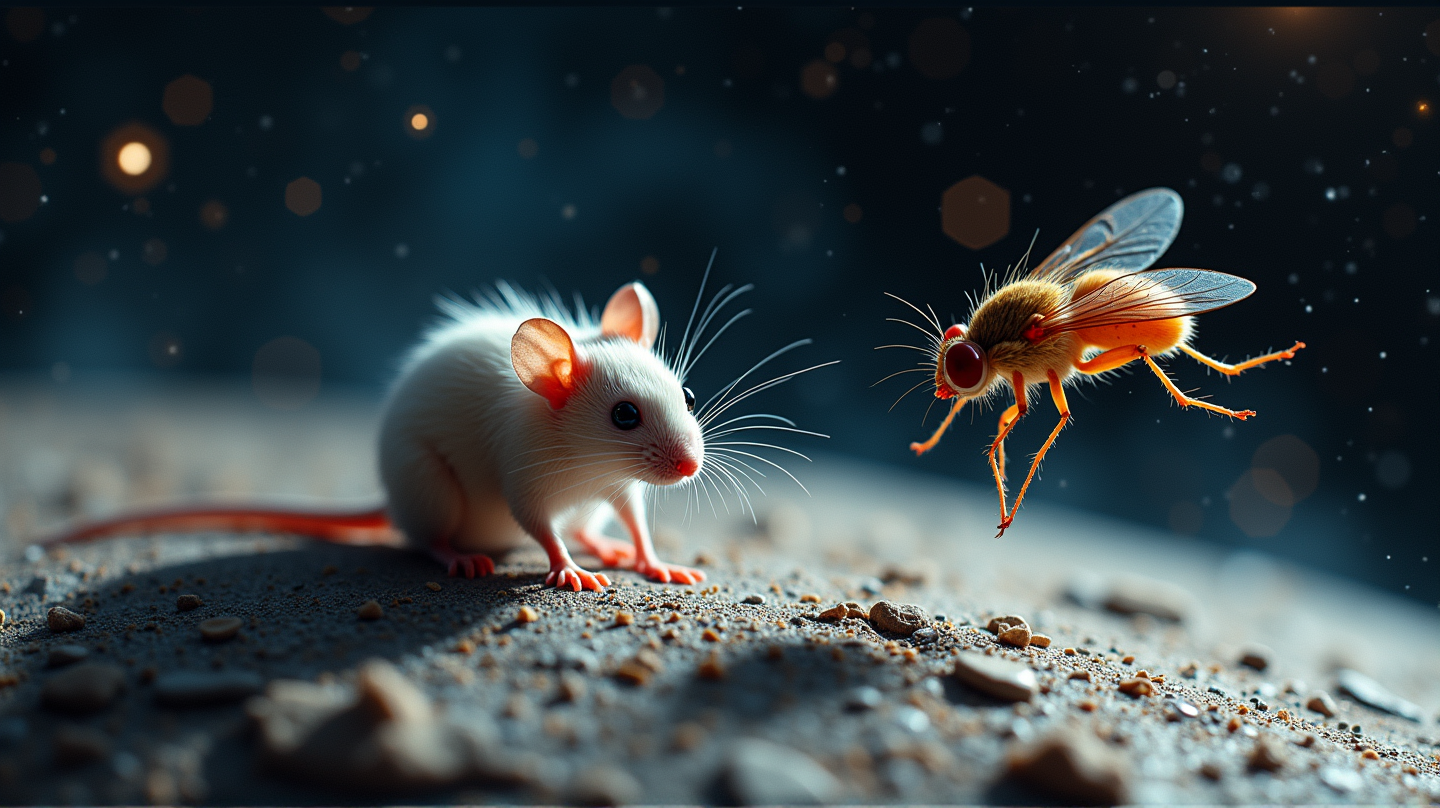Russia's Bold Space Experiment: Mice, Flies, and Lunar Dust Go Orbital!
Russia's Bion-M No. 2 mission propels biological research forward by launching mice, flies, and lunar dust into space.

As the peace of a quiet August night gave way to an awakening sky, the Baikonur Cosmodrome in Kazakhstan became the launchpad for a daring mission: the Bion-M No. 2. Ascending aboard a powerful Soyuz rocket, this mission echoes a saga of exploration, carrying with it the anticipation and curiosity of human and scientific advancement. But what did this mission offer beyond a simple journey through the stars?
A Menagerie in Space
The Bion-M No. 2 housed an unusual cargo – 75 mice, 1,500 fruit flies, plants, and lunar dust. A biosatellite designed to push the boundaries of understanding microgravity and space radiation, it promises insights into the biological sciences that could redefine space medicine and long-term space habitation.
Mice: The Astro-Pioneers
Mice, small but genetically similar to humans, were chosen for their quick life cycles and adaptability. The mission included three sets of these rodent pioneers: some adapting to terrestrial normalcy, others confined within spacecraft-like conditions on Earth, while the space-bound group became vanguards of survival amid cosmic conditions.
Continuous surveillance via cameras, alongside bio-monitoring with implanted chips, allowed for unprecedented data collection. It’s an attempt to unravel how high radiation levels and microgravity might affect human physiology, a mystery that stands in the path of our journey to worlds like Mars.
Fruit Flies: Historical Participants
Fruit flies have been part of space endeavors since their inaugural flight on a V-2 rocket in 1947. These unsuspecting heroes continue today in the Bion-M mission, offering valuable data on genetic changes and survival strategies in space.
Their inclusion is more than symbolic. It reinforces a legacy of experimentation that started with monkeys, dogs, and rabbits – species that ensured safe human passage to the cosmos.
Lunar Simulants: Rock Stars of the Mission
Carrying lunar dust, the Bion-M No. 2 examined moon-like materials as they interacted with space’s vacuum and radiation. This experiment fueled speculative strategies for lunar colonization and potential terrestrial applications of moon-derived resources.
Why This Mission Matters
Russia’s dedication to bioscience in orbit is as vast as the area itself. By simulating long-term space conditions, researchers aim to pioneer medical advancements and safety strategies for astronauts venturing beyond Earth’s cradle.
This mission isn’t just about Russia; it’s a cornerstone in the global effort to understand life in the universe’s broader context. According to The Times of India, the findings promise applications that extend from the desolate floors of empty space to our thriving Earthly domains.
Conclusion: Charting the Courseless
Navigating through this cosmic endeavor, Russia continues a journey that shapes the quest for understanding, sparking imaginations and enriching scientific literature. The Bion-M No. 2 mission is not simply a leap into the void; it’s a paradigm shift in humanity’s endless voyage to touch the stars.

